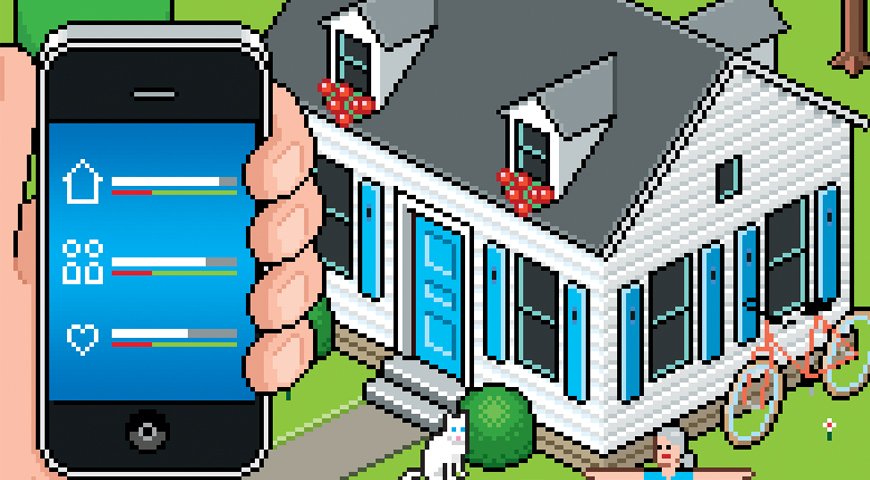How can the everyday technology of smartphones impact our health?
I believe the answer is the the inclusion of domestic objects in a web-connected life. In this world, your smart phone is a hub receiving data from connected home devices such as a thermostat, blood pressure monitor, coffeemaker and porch lights. Their performance is then summarized for viewing and/ or direction via your smart phone’s display. Your home will become smarter in its energy consumption and its ability to facilitate your daily living. The smart home is a platform with huge potential to improve the health of all citizens, especially retirees.
Let me provide some background.
Successful aging is built on good health. Good health is achieved through a combination of active prevention and the early identification of serious problems before they can mature into crises. Geriatricians have summarized successful aging in three distinct dimensions: self-care, household maintenance and community/social inclusion. If you can effectively care for yourself and your home while preserving your key social relationships, you will live longer. A lot longer.

This is where the smart home comes in. While such an environment can help the healthy stay healthy, its true value lies in its ability to accommodate our inevitable decline in balance, strength, memory, hearing and vision. A smart home designed for health can track things like food preparation, phone and TV use, tooth brushing and physical movement. These activities create a baseline set of metrics that can be tracked by a data center or medical mission control. If one of those activities falls off—say, physical activity, because you are in bed with the flu—the smart home will capture the new pattern and transfer its data to the mission control, which will then notify someone (i.e. EMS or a family member) to get to you before you’re too ill to get out of bed or call for help.
The massive economic benefit of a healthy smart home is obvious. It is a profoundly effective tool for long-term preventative medicine. If a home can keep track of the activities of daily living while also helping manage chronic conditions such as high blood pressure, the chance of a disastrous complication such as stroke or heart disease is much diminished. And the future cost savings are substantial, especially when one considers the 75 million baby boomers who might live in such a home in the very near future. I expect that those entities that pay for healthcare—insurers, Medicare and Medicaid—will get behind this trend.
As in every new chapter of technology, there’s a downside: loss of privacy. I expect many people will want their personal home and health information to remain private.
In addition to my usual longevity advice about eating right, moderate daily exercise and staying socially engaged, add this: Figure out now where you want to live after you turn 70. And aim for a home, circle of friends and a support system that can help keep you alive.

What a smartphone can do for you
01. Keep the temperature and the air quality at their most comfortable and efficient.
02. Change the lighting to reduce visual loss due to excessive glare from cataracts.
03. Filter and bolster ambient noise to maximize hearing.
04. Prevent falls by capturing balance from footstep and gait patterns.
05. Remind occupants of social obligations (Socializing is the number one behavior associated with longevity).
06. Keep occupants in one place—at home—all the way to the end of their natural lifespan. This last point is critical, because changing physical living quarters while in a declining state of health often triggers major depression, resulting in social withdrawal and an earlier death.








